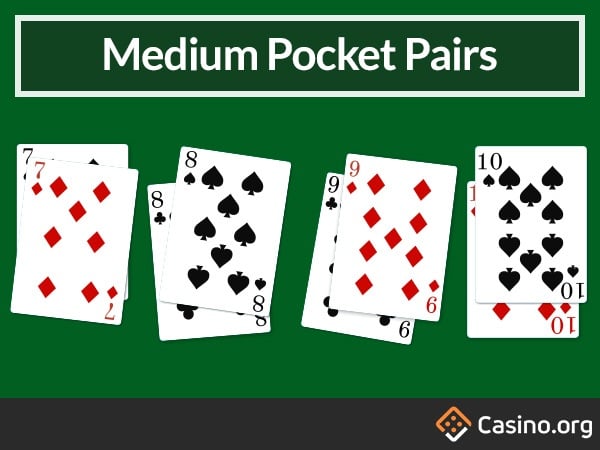How To Play Small Ball Poker
Roulette are now live at Downstream Casino Resort.
All Players must purchase roulette chips from the dealer before they can start play. The dealer will give each player a specific chip color so each player’s wagers are separate from each other. The chip value depends on what the player purchases. When the patron is ready to leave the Roulette Table, they must redeem their chips for cashable chips at the roulette table.
Game Play: You can place wagers by placing colored chips on the Roulette Table. The object of the game is to correctly guess where a small white ball will land on a Roulette Wheel. Then, as wagers are being placed, the Dealer spins the Roulette Wheel in one direction. As the wheel spins, the Dealer drops the small white ball in a way that will make the ball travel in the opposite direction of the Roulette Wheel. Wagers may be placed until the Dealer announces “No More Bets.” When the ball drops from the track onto the Roulette Wheel and finally rests into a Roulette Wheel segment, the Dealer calls out the winning number and places a marker on it. After the winning number is announced, the Dealer clears the losing wagers and pays out the winning wagers. Patrons: Please do not remove winning wagers or place new bets until all winners have been paid. After the Roulette Table is cleared, the Dealer announces “Place Your Bets,” signaling the beginning of a new game.
The secret to small-ball success isn’t the hands that you play – it’s the amount that you bet. The strategy works in three phases. First, you bet less in order to win more, which allows you to play more hands preflop without bleeding your chipstack away. You also need to know when to call, re-raise, limp or fold. Small Ball Poker Strategy – When Not To Use Small-Ball Betting Key to the advantage of keeping the betting smaller is that you can let your skill and experience count over several betting rounds. You can build your assessment of your opponents most likely holding – and decide whether you are ahead. This play can work,or it cant it’s best to stick to small ball which if timed right pays real big when your opponent shoves in 3 way pots with you as the hunter in the middle with top set playing it coy. 50% of the time your opponent will call your raise the other half he will reraise you making you fold doesn’t seem profitable long term. If you play small ball poker correctly, in the long run the amount you win from opponents when they call you down with sub standard hands should outweigh the amount you lose from making consistent raises and bets without a strong hand. This is a reason why it is important to make small raises and bets instead of large, stronger bets. Game Play: You can place wagers by placing colored chips on the Roulette Table. The object of the game is to correctly guess where a small white ball will land on a Roulette Wheel. Then, as wagers are being placed, the Dealer spins the Roulette Wheel in one direction.

A common discussion amongst poker players today is about what approach to take or style to adapt while playing. Should you take a small ball or long ball approach? Most often, these discussions are in regards to tournaments.
However, many of the same concepts, pros and cons will apply to heads up poker as well. That's what the focus of this article will be about. Before I get to that, let's quickly cover exactly what each style entails:
What is Small Ball Poker?
The name 'small ball' primarily stems from the concept of avoiding confrontations where your whole stack or tournament life is at risk. Rather, players look to play many hands by either limping or min raising preflop and picking up the pots on the flop with small bets. Small ball players grind out their stacks slowly and steadily, but do so without having to be constantly at risk. This whole strategy relies on a player's ability to play postflop.
What is Long Ball Poker?

The long ball approach to poker is quite the opposite. Instead of seeing a ton of flops for cheap, long ball players wait for big hands and make big bets. Long ball poker players build their stacks one opponent's stack at a time, often putting their whole stack or tournament at risk. The long ball approach relies on a player's lack of ability to play postflop while at the same time attempting to counter the small ball player's strategy.
Small Ball Poker: Pros & Cons
Here are some pros and cons to adapting to a small ball style.
Pros of Small Ball Poker:
- When you risk less, you lose less. If you limp or min-raise on the button in a heads up match, you'll lose less money when you're 3betted and have to fold as opposed to fully 3x'ing it. You also keep the pot much smaller which allows you to make smaller c-bets and become less pot committed.
- Put constant pressure on your opponents. Since your post flop skills need to be solid in order to play a small ball style of poker, you'll be able to put constant pressure on your opponents. Their ranges will be a little bit easier to read whereas yours will be much more difficult to pinpoint since you're so active. This in turn makes you difficult to play against.
- You see less variance. When you're not putting your stack or tournament at risk as often, you cut out a lot of variance that someone doing that might. Less variance means a more stable bankroll and/or income. It'll also keep you sane.
Cons of Small Ball Poker:
How To Play Small Ball Poker Vegas World
- Lots of post flop play. If you're new to poker or just haven't developed your post flop play, you're going to have a difficult time utilizing the small ball style. You're going to be involved in many flops which means facing many decisions that aren't clear cut with marginal hands.
- You will have an active image. This is both a pro and a con. The good aspect to having an active image means that you'll be called down lighter by players who don't think you have a decent hands. This means they'll try to value bet you thinly.
Long Ball Poker: Pros & Cons
Ok, let's look at some pros and cons for utilizing the long ball approach.
Pros of Long Ball Poker:
- You're more difficult to exploit. If you're making big raises or all-in shoves, it's much harder for other players to exploit you. They either have to call off a big portion of their stack or all of it. And most times a player's hand isn't good enough for them to risk their tournament life or stack over.
- It's not as much of a grind. Using a big bet or all-in approach isn't nearly as much of a grind as the small ball style is. The pots you're picking up are much bigger and build your stack up much faster.
- Your decisions are easier. I'm not saying every decision you make using the long ball style is easier, but am saying that since you play fewer hands, the hands you do play are stronger therefore being easier to play than maybe suited connectors or hands that are easily dominated (which you very likely will play using the small ball style).
Cons of Long Ball Poker:
- You'll experience more variance. By playing for stacks or by playing hands using bigger bet sizing, you're going to subject yourself to more variance. After all, the more you risk the more you stand to lose. Keep in mind though that the variance will work both ways - you'll lose a lot when you're losing and when a lot when you're winning. But it's definitely swingy.
- Playing a long ball style caps your growth. The more you play a long ball style of poker, the longer you're going to go without learning how to play post flop. All this does for you is stunt your growth as a player. The sooner you step out of your comfort zone and start to play some small ball poker, the quicker you'll grow to be comfortable with it. Your skills as a player will quickly increase as well.
Which Style to Use in Heads Up Play?
How To Play Small Ball Poker Room
I really don't think there is a right or wrong answer as to which style is best for heads up play. In terms of sit and go's or MTTs, I use the small ball approach myself. I do a lot of min-raising, stealing and tend to play a lot of hands. As a result, I have earned more, lessened my variance, and have learned a ton from forcing myself to play post flop.
With heads up play though, it's hard to say what approach exactly I take. I don't do any min-raising or limping, I do fully 3x it (in HU cash games at least). And I do play quite a few hands. So, it's almost like I play a mixed style, although with my bet sizing it probably leans towards a more long ball style.
Poker Games How To Play
If I had to suggest something, I would say to try both styles out and see which suits you best. From the little experience I have, I have a difficult time seeing how adapting one style over another is going to make such an impact on your overall heads up game. Aside from the variance due to the bet sizing, both styles seem to be very similar. I think you need to try each one, see if there is a difference and then decide which one you like best.